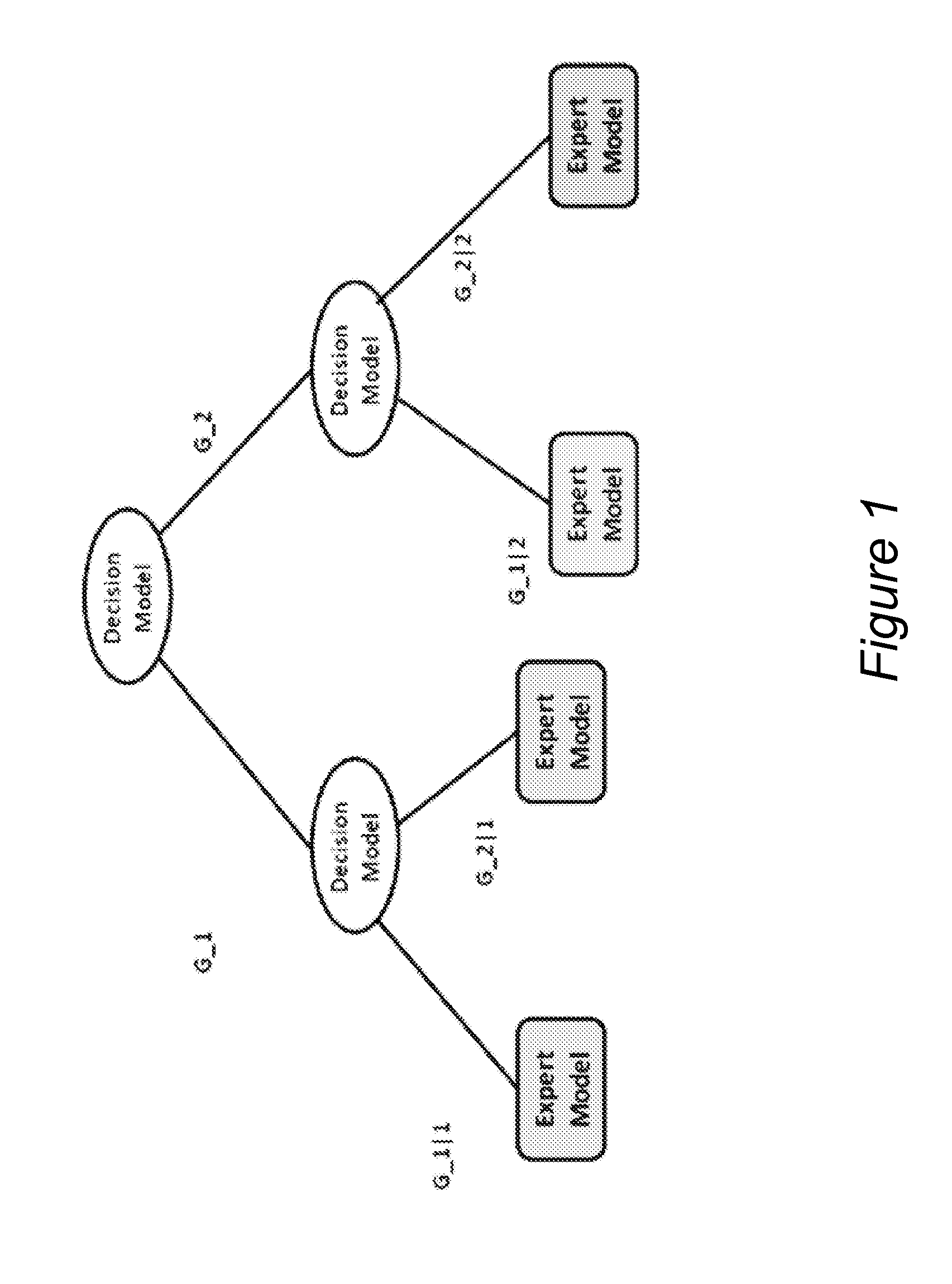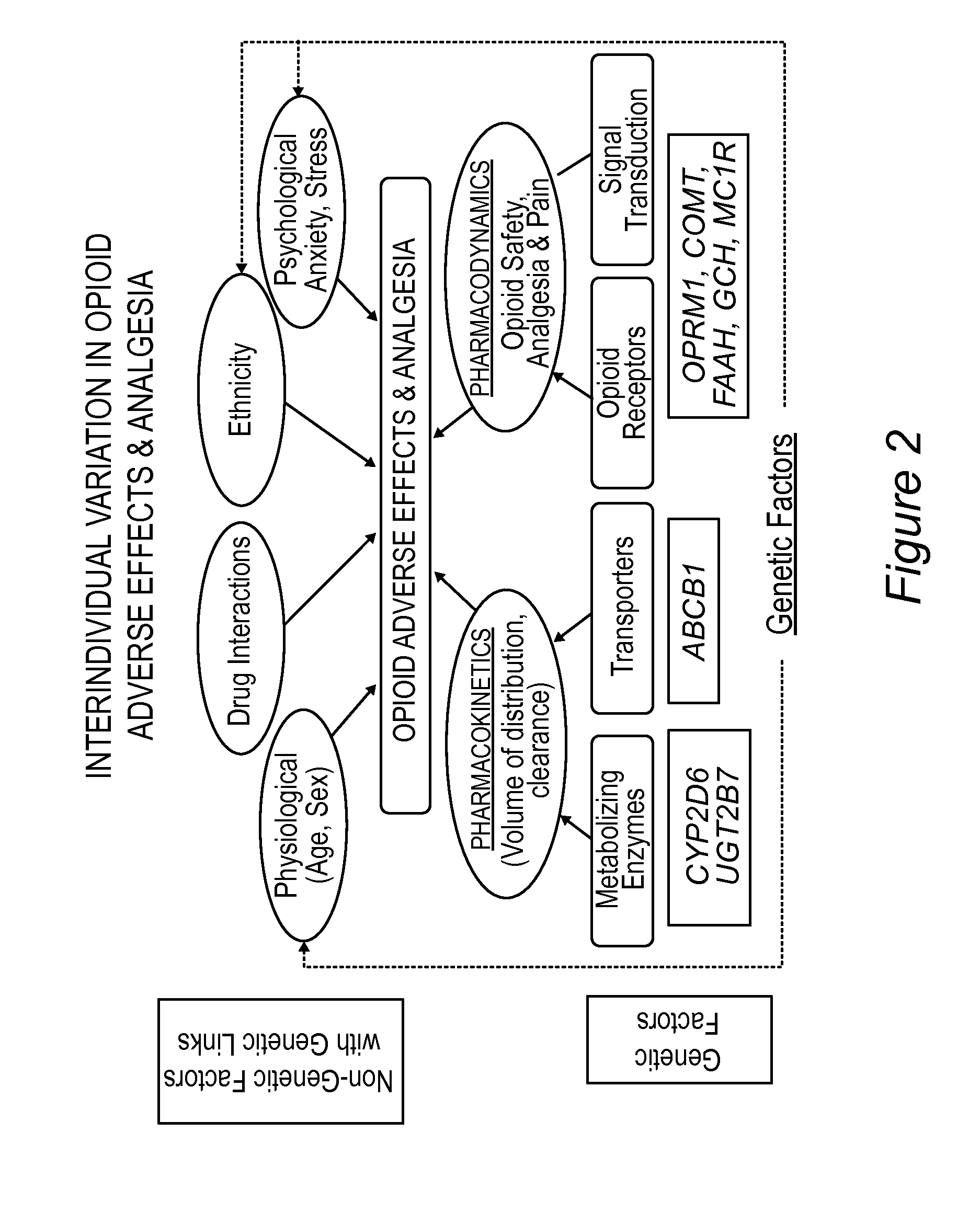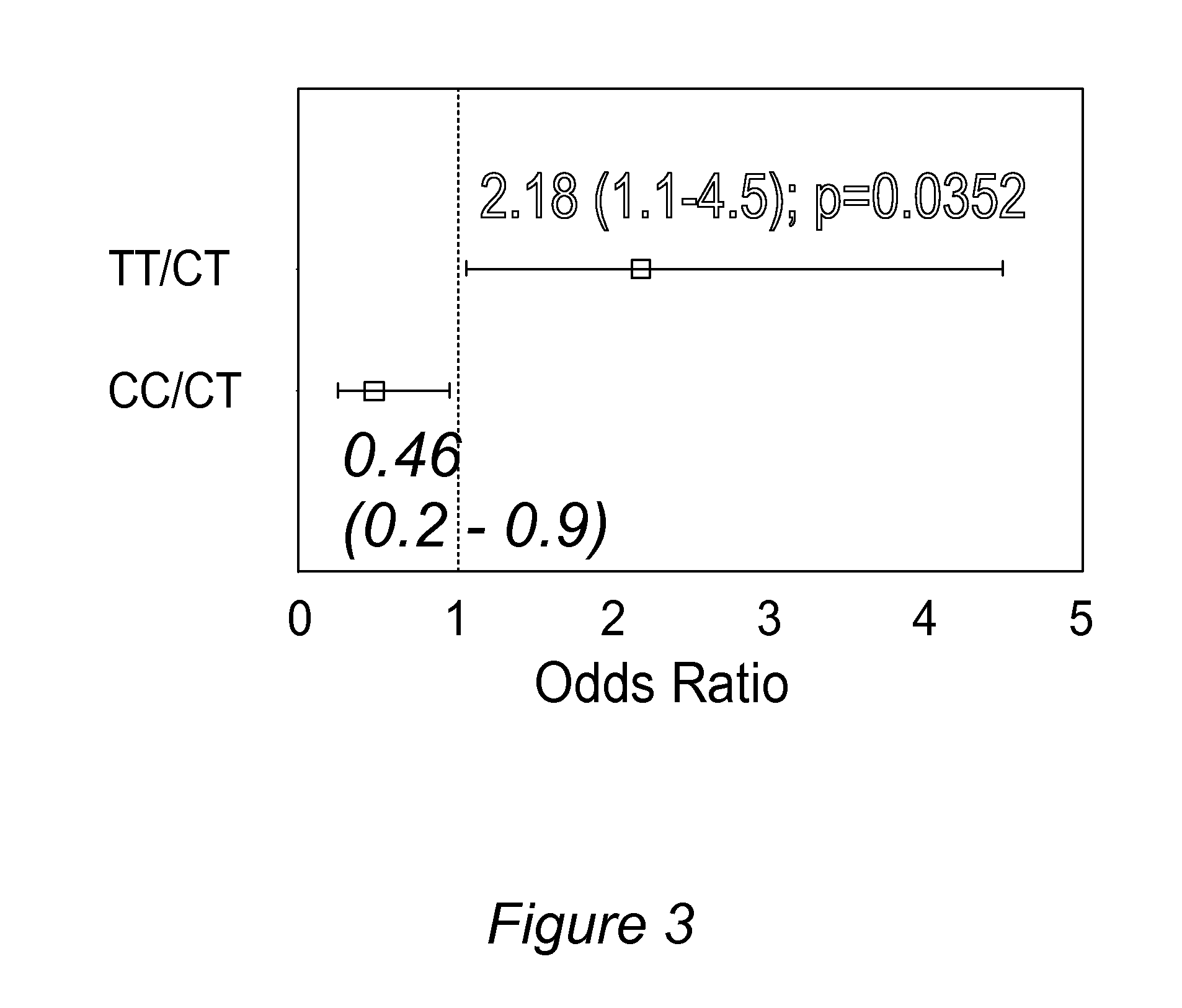Personalized pain management and anesthesia: preemptive risk identification and therapeutic decision support
a pain management and anesthesia technology, applied in the field of personalized pain management and anesthesia, can solve problems such as stymied efforts to elucidate, and achieve the effects of minimizing adverse effects in subjects, maximizing pain relief, and reducing risk
- Summary
- Abstract
- Description
- Claims
- Application Information
AI Technical Summary
Benefits of technology
Problems solved by technology
Method used
Image
Examples
example 1
Genotypes Associated with Opioid-Related Adverse Effects
[0204]Individuals can have highly variable responses to opioids (FIG. 2). A perioperative morphine pharmacogenetic study of 150 children undergoing tonsillectomy revealed associations between genetic / non-genetic factors and postoperative opioid-related adverse effects and inadequate analgesia. The mean age of study participants was 9.25±2.65 years, the ratio of boys to girls was 47:53, the mean weight was 39.3±15.1 kg, the race ratio of white to non-white children was 81%:19%, and the ratio of children with obstructive sleep apnea (OSA) to those with no OSA was 46:54.
[0205]After adjusting for non-genetic risk factors such as OSA, the TT genotype of the ABCB1 SNP (rs1045642) was associated with higher risks of respiratory depression (OR=2.2, p=0.035) and PONV (OR=3.45, p=0.029) from morphine compared to the CT genotype (See Table 1 and FIG. 3). The CC genotype of ABCB1 was protective against respiratory depression (OR=0.46) and ...
example 2
Genotypic Association with Opioid-Induced Respiratory Depression
[0206]In the same perioperative morphine pharmacogenetic study (Example 1), it was observed that after exposure to morphine, the resting minute ventilation (MV) decreased by 47.5% in children with the ABCB1 TT genotype, compared to only 18.4% in those with the CC and CT genotypes (FIG. 5). The trend persisted after a 5% carbon dioxide challenge, as resting MV after morphine decreased 29% in children with the ABCB1 TT genotype, compared to 10% in those with the CC and CT genotypes (p<0.05) (FIG. 5). This further illustrates that the presence of the TT genotype of ABCB1 (rs1045642) is associated with development of adverse effects from administered anesthesia.
example 3
Gene-Gene Interactions and Increased Risk of Opioid-Related Respiratory Depression
[0207]In the same perioperative morphine pharmacogenetic study (Example 1), it was observed that, for children suffering from prolonged respiratory depression in the PACU, a significant interaction was detected between ABCB1 SNP (rs1045642) and FAAH SNP (rs4141964) (p=0.022). The probability of having the highest risk of respiratory depression (46.7%) is observed in the combination of TT and AA genotypes in ABCB1 (rs1045642) and FAAH (rs4141964), respectively (FIG. 6). The lowest probability of respiratory depression (1.5%) was observed in the combination of CC and AA genotypes in ABCB1 (rs1045642) and FAAH (rs4141964), respectively (p=0.022) (FIG. 6).
PUM
| Property | Measurement | Unit |
|---|---|---|
| weight | aaaaa | aaaaa |
| body mass index | aaaaa | aaaaa |
| density | aaaaa | aaaaa |
Abstract
Description
Claims
Application Information
 Login to View More
Login to View More - R&D
- Intellectual Property
- Life Sciences
- Materials
- Tech Scout
- Unparalleled Data Quality
- Higher Quality Content
- 60% Fewer Hallucinations
Browse by: Latest US Patents, China's latest patents, Technical Efficacy Thesaurus, Application Domain, Technology Topic, Popular Technical Reports.
© 2025 PatSnap. All rights reserved.Legal|Privacy policy|Modern Slavery Act Transparency Statement|Sitemap|About US| Contact US: help@patsnap.com



